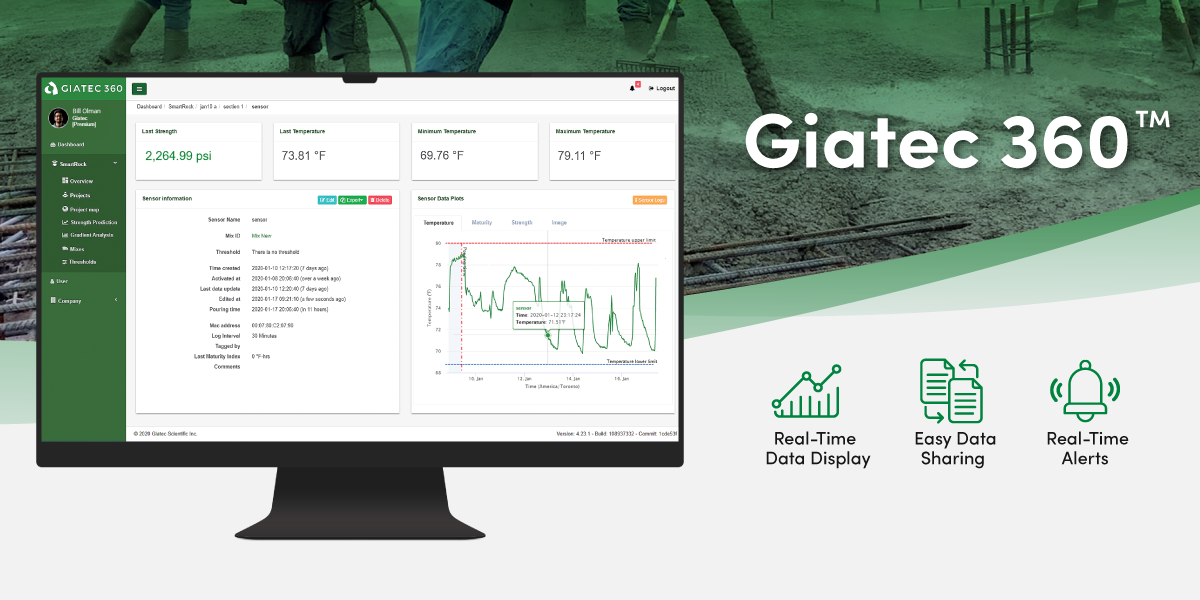Minimizing the risk of cracking is critical for maintaining structural integrity and increasing the service life of a concrete structure. This is an important consideration in all construction projects. Furthermore, it is especially critical in those that require the use of mass concrete, such as bridges, buildings, structural columns, and roads. Measuring concrete temperature gradients (or temperature differentials) helps engineers, contractors, and project managers minimize cracking in mass concrete.

Concrete gradient, or differential, is the difference between the temperature of the core and the exterior of a mass concrete element. The higher the concrete temperature gradient, the more the structural integrity and service life of a concrete structure are jeopardized. According to ACI 301-16, Specifications for Structural Concrete, the maximum concrete temperature gradient should not exceed 35 °F (19 °C) during curing. In most situations, this approach is very conservative. However, in other cases, it can be an overestimation of the allowable thermal gradient.
How Does a Temperature Differential Cause Cracking?
A concrete pour generates an appreciable amount of heat (exothermic reaction) which raises the overall temperate of the element. Generally speaking, the higher the cement content, the more heat will be produced.
However, when the exterior of the mass concrete is exposed to an environment that has a lower temperature, it cools down while the temperature of its core remains the same. This would be exacerbated if it is exposed to extreme weather conditions.
Because the core is at a higher temperature, it expands in volume while conversely, the exterior contracts due to its cooler temperature. As a result, these opposing forces create tension. If that tension exceeds the tensile strength of the concrete, thermal cracking will occur.
How to Measure the Concrete Temperature Gradients
On construction sites, temperature gradients are normally measured using thermocouples or data loggers. It is time-consuming to use these basic tools to collect data and analyze it on a computer. This could negatively impact a project’s schedule. Fortunately, contractors and engineers can take advantage of advanced technology that uses the maturity method to monitor internal concrete temperatures. One such technology is SmartRock®. This widely trusted wireless sensor is installed on the rebar before a concrete pour and enables users to determine:
- The temperature of the core and the surface at the same time
- The concrete strength in both locations
- The maximum allowable gradient for a particular pour
For greater control over the monitoring and analysis of mass concrete element temperatures, project owners can complement SmartRock with SmartHub™. This is a remote monitoring system that allows you to access SmartRock data anytime and anywhere. Likewise, contractors can also use Giatec 360™, a robust concrete testing reporting software.
The Giatec 360™ dashboard has a “Gradient Analysis” that can program thresholds. It also allows you to easily export charts, and issues notifications to alert you when the concrete temperature gradient limit is crossed.












One Response
Great article,
thanks